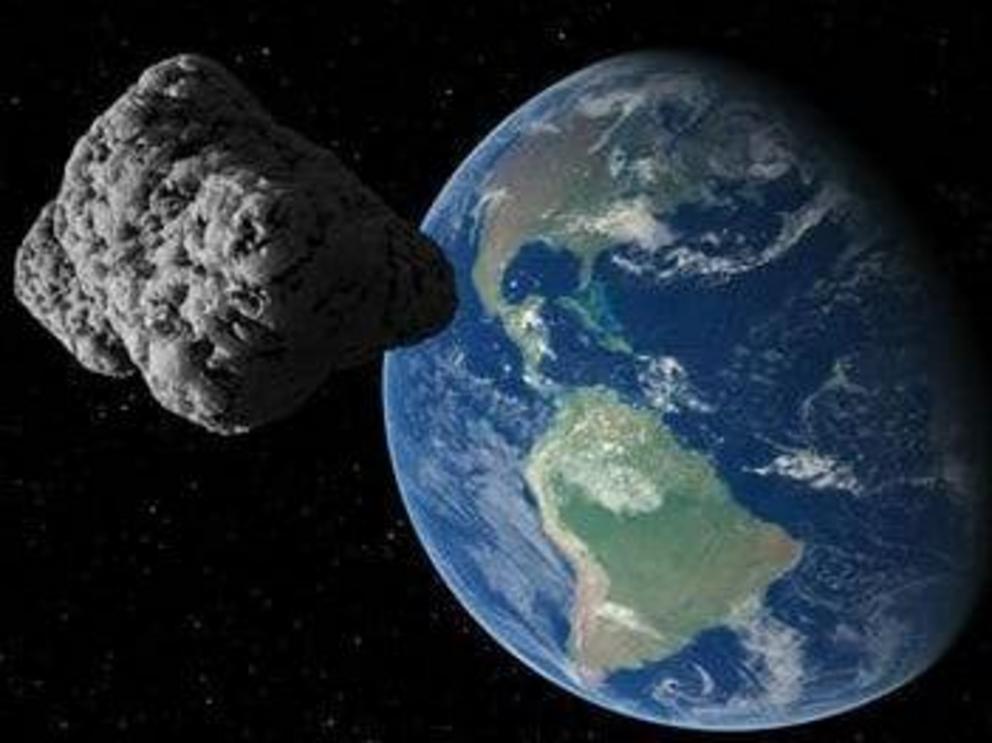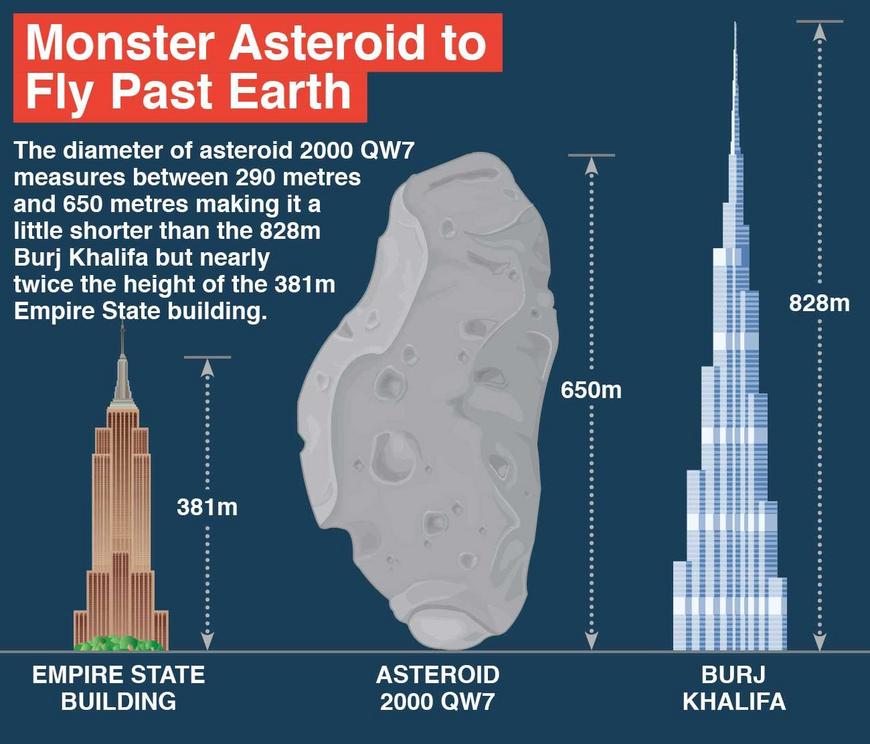NASA warns massive asteroid 2000 QW7 to skim Earth
A monster asteroid twice the height of the Empire State Building and travelling at 23,000km/h will have a close shave with Earth, NASA warns.
A massive asteroid that is twice the height of the Empire State Building is set to skim past Earth in less than a month, according to US space agency NASA.
Experts predict the asteroid 2000 QW7 will whiz past our planet at 23,100km/h per hour on September 14, The Sun reports.
The space rock measures up to 650m in diameter making it slightly smaller than the world’s tallest building — the 830m high Burj Khalifa in Dubai.

The asteroid 2000 QW7 will whiz past our planet at 23,100km/h on September 14, experts say. Picture: SuppliedSource:Supplied

The asteroid is almost as wide as the world’s tallest building, Dubai’s Burj Khalifa, is high. Picture: SuppliedSource:Supplied
NASA’s Centre for Near Earth Object Studies (CNEOS) said the asteroid will be flying past us at a distance of 5.3 million km.
Asteroids and other space materials are considered near-Earth objects if they pass within 1.3 astronomical units of our planet — or 149 million km.
Space X and Tesla CEO Elon Musk pointed out on Twitter last week that Earth currently had no defence against “killer” asteroids.
Replying to a tweet about the asteroid Apophis, which will scrape past Earth in 2029, Musk pointed out that there is, currently, no defence system to protect our planet.
Musk said, “Wouldn’t worry about this particular one, but a big rock will hit Earth eventually & we currently have no defence.”
DOOMSDAY SPACE ROCK
The doomsday space rock Apophis is named after the Egyptian god of chaos and darkness — and NASA is worried it’s on a collision course with Earth.
The rogue space rock — which is taller than the Eiffel Tower — is expected to make several close passes to Earth this century, the most dangerous of which is in 2068.
A horrifying simulation shows exactly what will happen if Apophis hits Earth.
In the video, the initial impact in the Atlantic Ocean between southwest of the US and north of South America.
It triggers an explosion equivalent to 65,000 Hiroshima nuclear bombs.
In just a few hours, the resulting giant fireball and shockwave spreads as far as Kansas, nearly 4023km away from the initial impact.
YouTube user Space Sim, who created the video, said debris from the blast would rain back on Earth as fiery asteroids.
“In this simulation the asteroid first hits and then sends fragments from the collision back into space,” they wrote in the video’s description.
“These orbited the Earth for a short period of time before coming back to Earth.”
Russian scientists fear Apophis, full name Apophis 99942, could smash into Earth at speeds of 24,140km/h.
They say the deadly rock’s path around the sun means there are 100 “possible collisions between Apophis and the Earth, the most dangerous of them in 2068”.
However, it’s not time to panic just yet — Apophis has just a one-in-250,000 chance of actually colliding with our planet, according to NASA.

“Apophis has been one of those celestial bodies that has captured the public’s interest since it was discovered in 2004,” NASA’s Steve Chesley said.
“Updated computational techniques and newly available data indicate the probability of an Earth encounter on April 13, 2036, for Apophis has dropped from one-in-45,000 to about four-in-a million.”
The 370m wide space rock was discovered in June 2017.
It was only spotted via a space telescope in Hawaii after it had sped by our planet, and could have caused chaos if it hit Earth.
It passed within just 881,920km of our planet, relatively close in space terms.
While the asteroid is not big enough to obliterate Earth, it could do some serious damage at the local level.
The huge space rock will whiz by in less than one-tenth of the distance between the Earth and the moon in 2029 — closer than some of our satellites.
And it’s sure to pass by Earth again, with scientists unsure as to how close its next fly-by will come.
Alberto Cellino of the Astrophysical Observatory of Turin said: “We can rule out a collision at the next closest approach with the Earth, but then the orbit will change in a way that is not fully predictable just now, so we cannot predict the behaviour on a longer timescale.”
A leading astrophysicist from Queen’s University Belfast reckons an asteroid strike is just a matter of time.
In 1908, a small asteroid exploded over Tunguska in Siberia and devastated 1287sq km.
Video can be accessed at source link below
